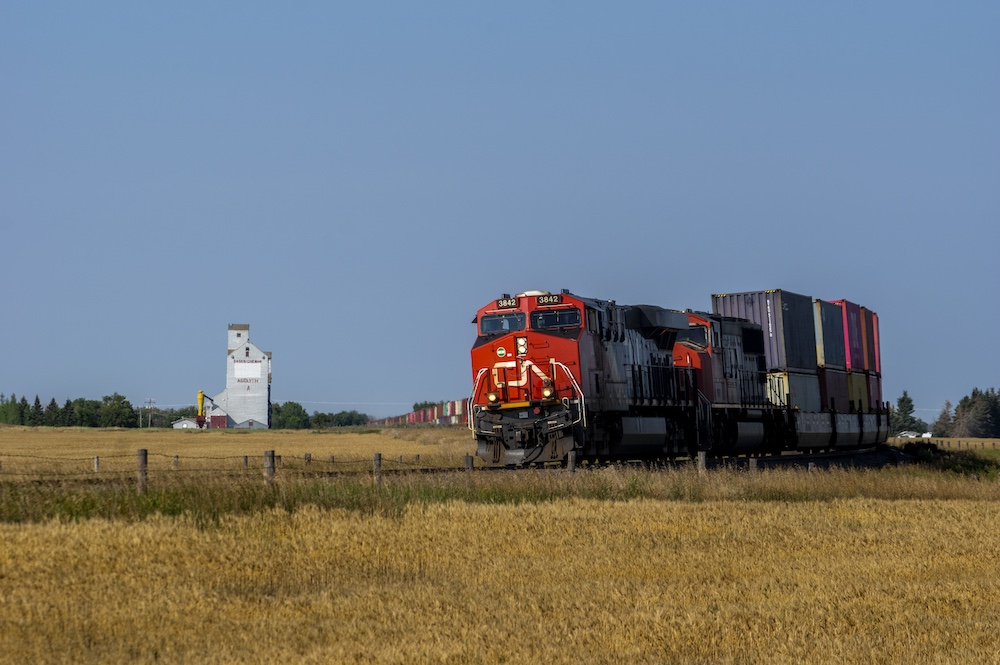
Exploring the Canadian prairie railroads by Provincial highway 14 between Edmonton, Alberta and Saskatoon, Saskatchewan, one parallels the densest part of the Canadian National main line, hosts VIA Rail’s iconic Canadian streamliner as well as history, photo props, and even a sampling of CPKC’s former Canadian Pacific. The twist? Highway 14 is actually two separate highways — Alberta 14 and Saskatchewan 14 — that don’t connect!
Driving Western Canada’s prairies is easy on uncrowded provincial highways, the scenery is pleasant, and the tracks are usually within sight and unimpeded. There is also a surprising amount of rail history and customer activity along the way.
Edmonton is a good starting point with ample food, lodging, and railroad things to do. While Canadian National’s Walker Yard no longer humps cars, it is home to large diesel and car shops and lots of switching. Edmonton is CN’s Canadian operating headquarters and much of the rail activity comes from Alberta’s petroleum drilling and refining activity that begins in earnest just north of the city.
Edmonton’s VIA Rail station is an oddity — a 1998-constructed stub-end station along the Canadian’s through route. Also, don’t forget Edmonton’s three-line light rail system when touring the city.
The Wainwright Sub
Heading east from Edmonton, it’s 43 miles to Tofield, Alberta where CN’s Wainwright Sub comes alongside just east of town. The Wainwright Sub, completed in 1909 by Grand Trunk Pacific (GTP), is in the middle of CN’s densest network segment between Winnipeg and Jasper, Alberta where annual volumes exceed 100 MGT.
Independent rail data collector RailState (see “Collecting train data” below) shows CN ran an average of 32 trains per day in 2024’s first quarter, with intermodal trains making up approximately 40% of the movements, followed by manifests. Grain moves in unit trains while chemicals and petroleum are usually in mixed freights. The Wainwright Sub is much busier than CN’s scenic Prairie North Line, which is parallel to the north and only averages three or four trains per day according to RailState.
Shonts, a few miles past Tofield, features a traditional red wooden grain elevator that’s been out of use for at least a half-century but does still make a good photo prop. A different red elevator from Shonts was saved, moved, and is now restored at Calgary’s Heritage Park. Ten miles east at Poe, another wooden elevator still stands — consider both structures endangered.
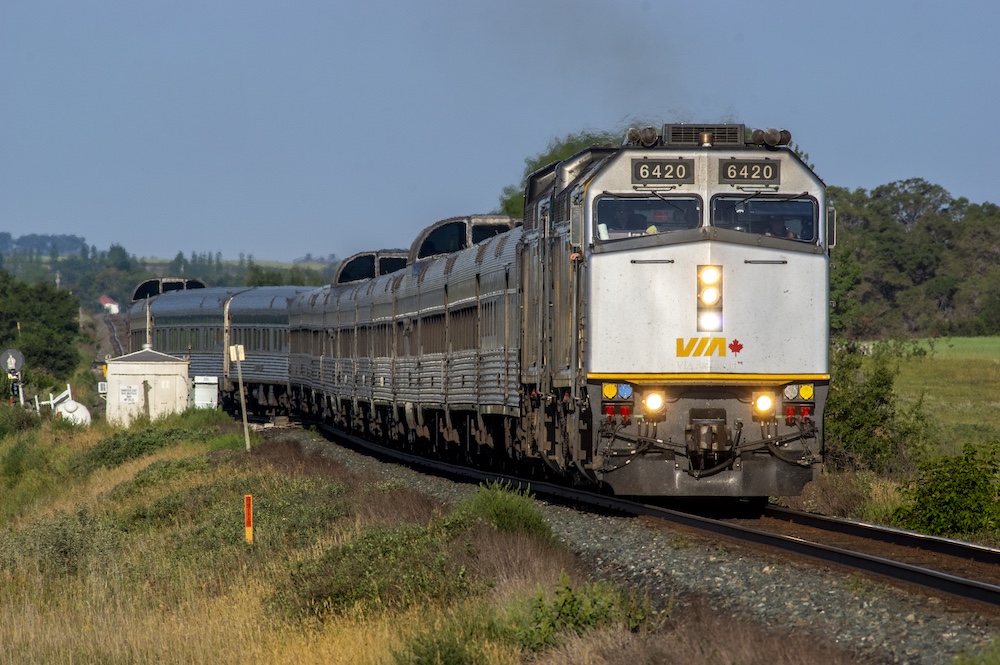
In contrast, Viking features a pair of modern, high-capacity grain terminals for loading unit trains. Parrish and Heimbecker’s 150-car loop track terminal was completed in 2019 and is home to a black ex-CP SD40-2. But the real gem is at Cargill’s nearby terminal — a former Burlington Northern C30-7 painted in Cargill’s attractive green and white livery. This once-common unit is now rare — few C30-7s survive. Viking is a flag stop (advance notice required) for VIA’s Canadian, which pauses at the nicely-restored 1909 GTP depot, now also an art gallery and tea house.
Alberta 14 and the Wainwright Sub are side-by-side from Tofield 65 miles to Irma. CN then diverges to the south for the scenic highlight — a massive steel trestle across the broad Battle River valley. At 2,775 feet long and almost 200 feet high, the bridge was Canada’s longest free-standing railway trestle when built in 1908. Local boosters have built a viewpoint that provides excellent angles, requiring only a 3-mile detour from the nearby town of Fabyan.
Wainwright’s station situation has come full circle. VIA Rail built a small and modern “stationette,” but it was closed and recently torn down. Passengers again gather under the eaves of the 1930 CN depot that has been restored as the Wainwright District Museum and Visitors Center (it also houses an Italian restaurant).
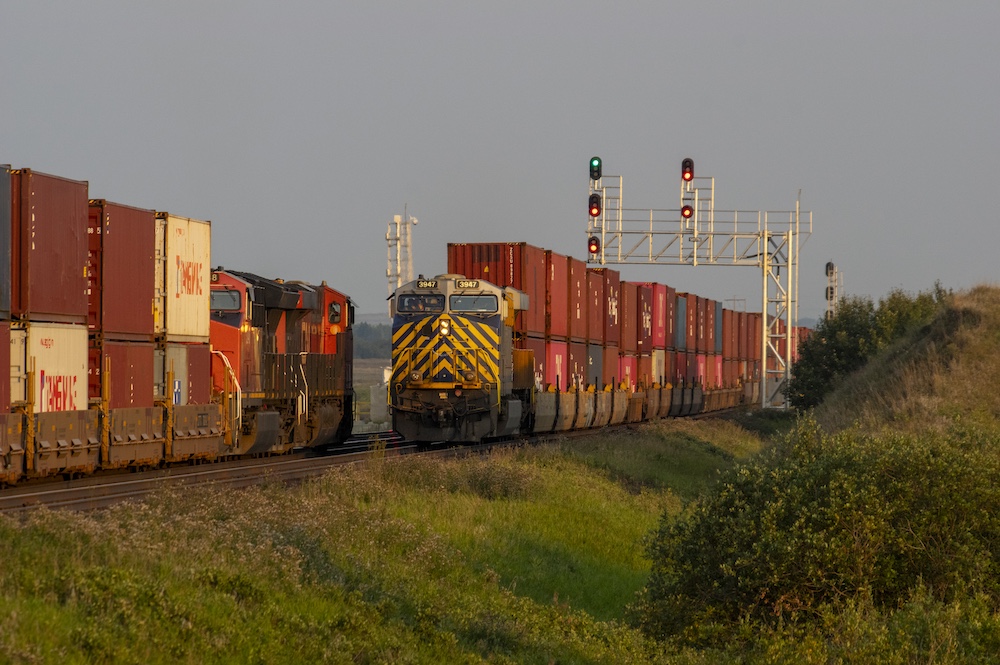
Ten miles east of Wainwright, a right turn on secondary highway 610 will reunite you with CN at the east end of Heath siding, a frequent meet point. The topography undulates in this area, so 610 and the Wainwright Sub join and part from each other, but don’t miss the Edgerton Museum (“Tea Cups to Tractors”), which includes the former GTP standard plan depot and a nicely painted wooden CN caboose. At Chauvin there’s another historic red grain elevator trackside (turn right at the World’s Largest Softball), and another at Butze.
Nine miles south, Alberta 17 becomes Saskatchewan 17 as you cross the provincial boundary towards Macklin, 18 miles away.
CPKC’s Hardisty Sub
At Macklin you encounter CPKC’s Hardisty Sub, a secondary route between Edmonton and Saskatoon that runs well north of the road’s main line between Calgary and Moose Jaw, Sask. RailState data reveals the Hardisty Sub averages four daily trains with oil unit and manifests accounting for most movements. Should you be lucky enough to encounter a CPKC westbound, there is a sweeping S-curve in Macklin conveniently next to the highway. CPKC’s Macklin Sub heads southeast and was recently upgraded for grain movements after being partially out of service.
Unless staying in Macklin for the World Bunnock Championship (a bone-throwing game likened to a cross between horseshoes and lawn bowling), leave town on highway 14 — this time, Saskatchewan 14 — heading east. You’ll cross the Haridsty Sub a few miles east of town, but the main attraction is Unity, 35 miles away.
Recommended for the railfan
Despite a modest motto (“A good town in a good district”), Unity is recommended for the railfan. CPKC’s Hardisty Sub goes over CN Wainright west of town and runs generally parallel the rest of the way to Saskatoon. CPKC swings north of Unity (population 2,500), while CN runs right through downtown. While VIA Rail’s simple platform is nothing to write home about, the Unity and District Heritage Museum on the north side hosts the town’s restored Canadian Pacific “Standard Plan Number 5” station and a late-model CN caboose. The adjacent North West Grain and Torq transloading terminals on Unity’s east side have former BNSF SD40-2s.
Wilkie, the junction of four CPKC subdivisions, is the next point of interest 20 miles east. The Hardisty Sub becomes the Wilkie Sub on its way to Saskatoon, while the Reford Sub (in service for only a few miles) heads south and the Lloydminster Sub strikes off to the northeast towards its namesake town. Wilkie has a siding, seven-track yard and a large grain elevator — even though the old station is gone, check out the yard for local power. Highway 14 follows CPKC’s Reford Sub south past a large Parrish and Heimbecker elevator that hosts an elderly SW1200RS (often parked in a shed) until the road curves to follow the CN Wainwright Sub eastward. You may spot a unit grain train on the loading loop at Reford, just a few miles down the line. Reford also hosts a wooden grain elevator nearby and other historic elevators can be found at Landis, Perdue, Leney, and Kinley en route to Saskatoon.
New York is big … But this is Biggar
Saskatchewan 14 and CN are side-by-side for more than 25 miles until Oban, where CPKC’s Wilkie Sub rejoins the party and is parallel into the former CN division point of Biggar. Biggar cuts a larger profile than its 2,166 population partly due to its “New York is big … But this is Biggar” motto. Biggar’s GTP station, long in poor condition, was recently torn down but VIA Rail stops near the former station site. CN’s modest yard (supporting a large malt plant) is worth checking out and CPKC serves a Viterra grain loading loop north of downtown.
From Biggar to Saskatoon, CPKC is often right next to highway 14 while CN is parallel but slightly south. Just east of Dunfermline a CPKC spur crosses the road, en route to a huge Nutrien potash mine (also served by CN). Saskatchewan is the world’s largest potash producer and unit trains for export are regular sights on both CN and CPKC. Just after Saskatchewan 14 crosses CPKC outside of Saskatoon, three big rail customers with their own locomotives are just south: Nutrien (potash), G3, and DG Global (grain). The Saskatchewan Railway Museum is nearby (see below) and the CN Saskatoon yard, diesel shop and VIA Rail Station are all just east.
Elsewhere in Saskatoon, CPKC’s Sutherland yard is surprisingly large and the diesel shop is viewable from Central Avenue. The highlight of CPKC’s route through Saskatoon is the 1908 bridge across the South Saskatoon River. Uniquely, the single-track bridge deck is shared with the Meewasin River Trail, separated only by a waist-high wooden railing to the delight of photographers.
In fact, Saskatoon’s CPKC bridge walkway is a good analogy for this trip: pleasant, quirky, and best done in the summer.
Worth stopping for
The Saskatchewan Railway Museum has a small but interesting collection of railroad and traction equipment, and also educates visitors about its site as a WWI internment camp. The museum is located three miles south of highway 14 on Saskatoon’s east side and is open during the summer only (like many of the attractions mentioned in this article.)
VIA’s Canadian, the only classic streamliner still running with its original Budd domes and teardrop observation car, is a prime photo target. Westbound VIA No. 1 is scheduled on CN Wainwright Sub in daylight on Tuesdays and Fridays while No. 2 is planned for an overnight run on Tuesday and Saturday nights (but check — the train often runs very late).
Besides the railroad
Wanuskewin heritage site. This 590-acre site on the north side of Saskatoon has been a First Nations’ sacred site for more than 6,000 years. Visitors can enjoy an interpretive center, trails, crafts, and even a small bison herd.
West Edmonton Mall. This mall is so large … you could probably make it the 650-mile Edmonton-Saskatoon round trip before whoever you left behind experienced the entire mall. West Edmonton is the second-largest mall in North America and has 800 stores and services, including an amusement park, ice rink and its own version of New Orleans’ Bourbon Street.
The author thanks Canadian rail expert Shawn Smith for this help with this article.
Collecting train data
Collecting accurate train movement data can be frustrating, and railroads often guard it. But an alternative is developing. RailState collects train movement data for use by regulators, shippers, and investors through a network of independent (off right-of-way) sensors unaffiliated with the railways. RailState can tell you the frequency, size, and composition of trains; and by tracking individual cars between locations, velocity across specific parts of the rail network. RailState’s sensors are most prevalent in Canada and the company is expanding in the western United States.
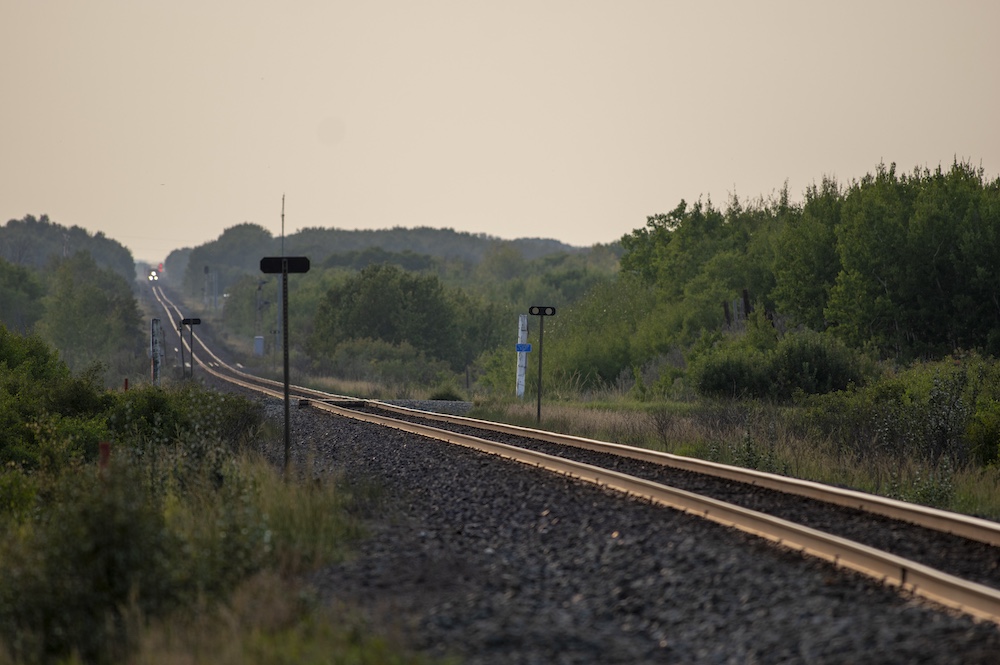








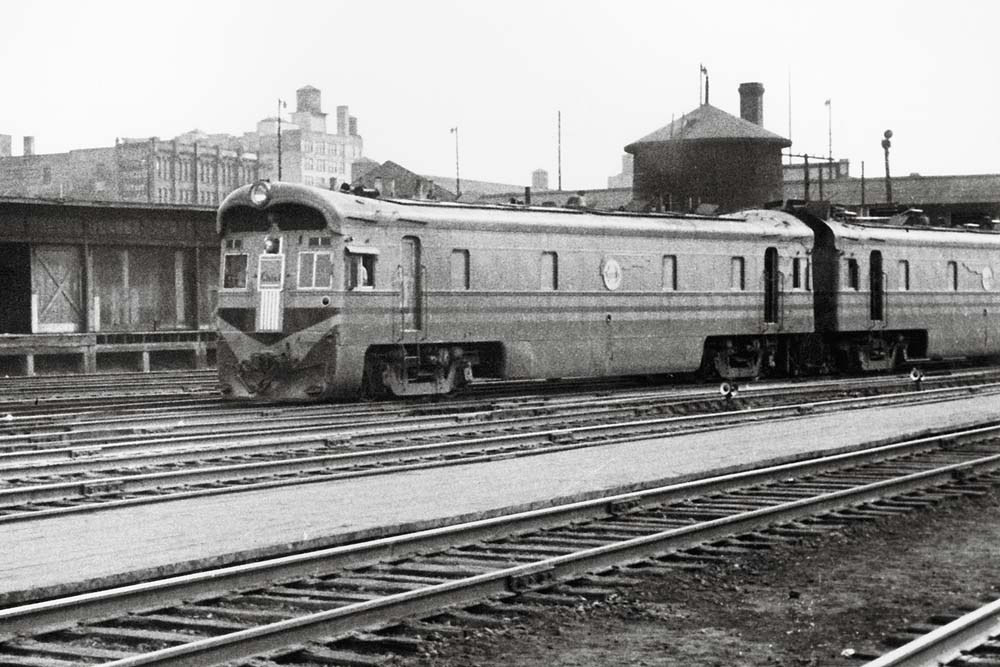
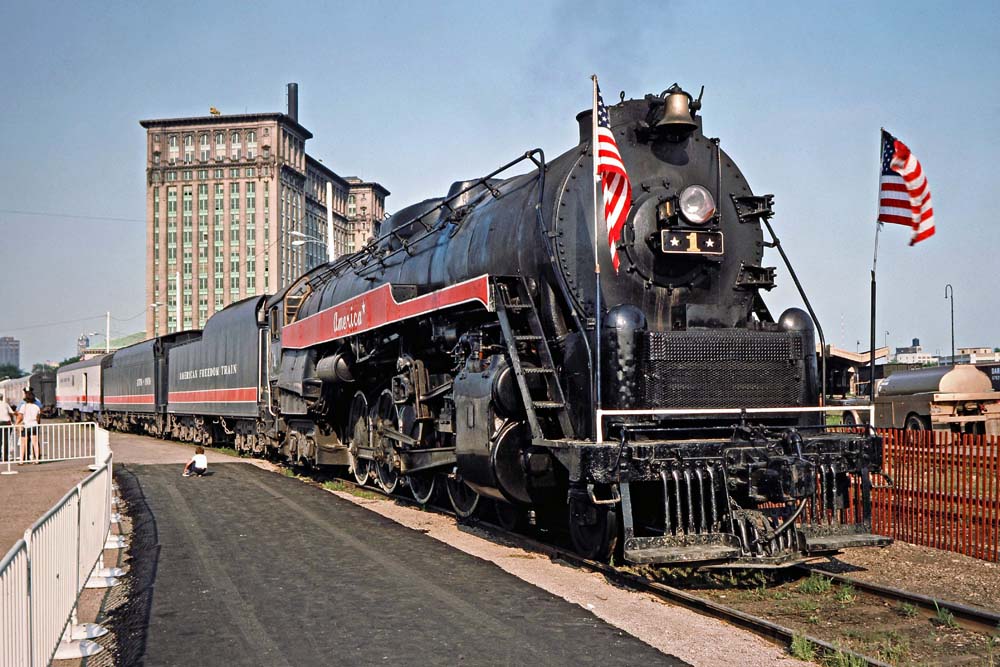




I am just starting a new HO scale railroad and I am loosely basing it on the CN line between Saskatoon and Edmonton, and this article is full of information that fits right up my alley. I am in Delaware, so getting information on this line is great. Keep up the good work.
Made this trek from Viking to Melville last year. Surprisingly scenic. Would highly recommend!